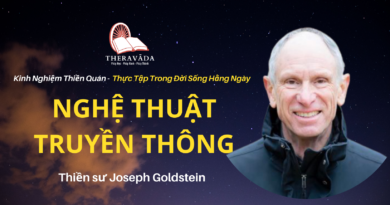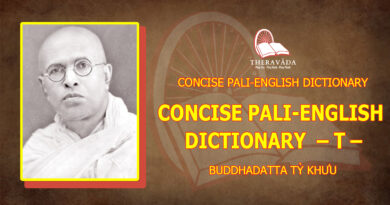A DISCOURSE ON THE ABODE OF THE NOBLE ONES – FOREWORD
A DISCOURSE ON THE ABODE OF THE NOBLE ONES
FOREWORD
What follows is an abbreviated English translation of a talk by the Venerable Mahasi Sayadaw of Myanmar on the Ariyaavaasa Sutta (Discourse on the Abode of the Noble Ones). The sutta was preached by the Buddha himself and takes its name from the fact that the Ariyas, that is, the Noble Ones at their respective stages on the Eight fold Path, have dwelt in the past, are dwelling in the present, and will go on dwelling in the future, in a safe haven of their own, ever mindful of and practising the Ariyaavaasa dhammas (norms or ideals). These dhammas, are ten in number and may be enumerated as:
(1) doing away with the five angas (limbs or members),
(2) accomplishment or fulfilment of the six angas,
(3) presence of a sentinel at the gate,
(4) possession of the four dependences,
(5) renunciation of religious beliefs external to the Buddhist faith,
(6) giving up all forms of seeking,
(7) unclouded (clear) aspiration,
(8) attainment of the “breathless” state (the fourth jhanic state)
(9) a mind free from defilments, and
(10) the knowledge that liberates.
Of these ten, Nos. (3), (9) and (10) are the most important from the point of view of Buddhist awakening and Deliverance. They are concerned with the principles and practice of Satipa.t.thaana Vipassan (Insight) Meditation, a subject to the active promotion of which the Ven. Mahasi Sayadaw has so selflessly dedicated his life and labour. The sentinel at the gate of No. (3) is none other than Mindfulness, the very foundation of Satipa.t.thaanaa Vipassanaa Meditation. The emancipated mind and the knowledge that liberates of Nos. (9) and (10) are the resultant benefits or rewards of deligent and substained meditative effort.
The message of this Sutta is loud and clear. Let those who can, emulate the example of the Noble Ones and seek their release from the bondage of Samsaric suffering!
Although in this talk and in talks on other suttas the Ven. Mahasi Sayadaw never fails to stress the practice aspect of the Buddha’s teaching, he has made available for us relevant and significant excerpt from the mine of scriptural learning that is so richly his. It may fairly he said that in every one of his talks, he virtually traverses the entire field of the Buddha dhamma so far as the essential and pragmatic approach to the supreme Buddhist goal of Nibbaana through Satipa.t.thaanaa Vipassanaa Meditation is concerned.
The talk was translated into English by U Aye Maung, formerly of the editorial staff of Sarpaybeikman Institute and author of “The Buddha and Creed”. The translation is in conformity with the five guidelines laid down by the Scriptural Committee of the Buddha Sasana Nuggaha Organisation.
U Nyi Nyi
Mahasi Disciple and Yogi
Member, Executive Committee,
Buddha Sasananuggha Organization
Yangon
2nd, October 1980









